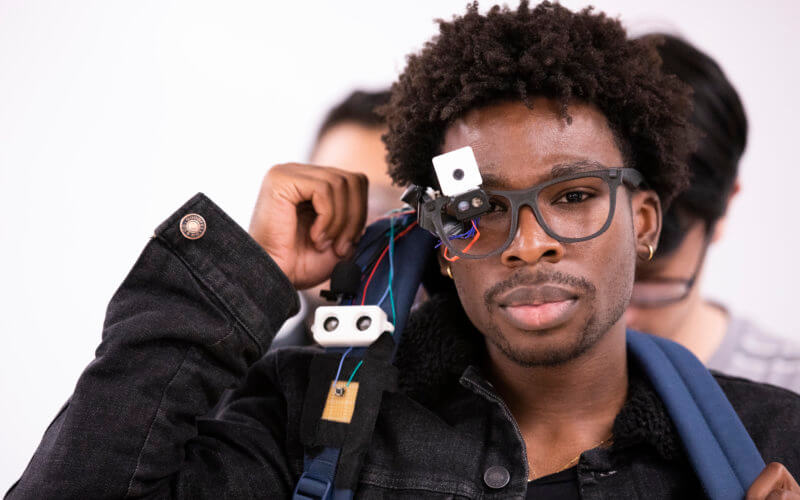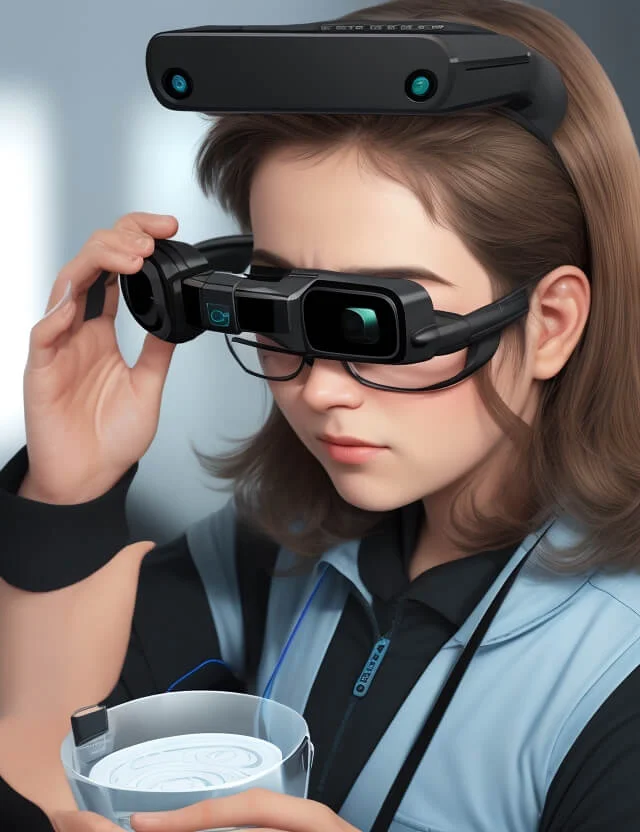Discover Advanced Assistive Gadgets for Individuals With Visual Problems
The landscape of assistive innovation for individuals with aesthetic impairments is evolving swiftly, offering an array of innovative gadgets that improve autonomy and interaction. From wise glasses that effortlessly merge aesthetic input with auditory support to sophisticated navigation applications that redefine spatial awareness, these devices are improving opportunities.
Smart Glasses Innovations
Smart glasses stand for a substantial development in assistive technology for people with aesthetic impairments. These innovative devices incorporate numerous functions made to enhance the individual's interaction with their atmosphere. Outfitted with cams and sensing units, smart glasses can capture real-time aesthetic information, which is then processed and conveyed to the customer via audio feedback or haptic feelings. This functionality permits individuals to get prompt descriptions of their surroundings, boosting their capability to involve and navigate with the world.
In addition, improvements in expert system have even more improved the abilities of smart glasses. Artificial intelligence formulas can acknowledge faces, read message, and recognize items, making them important tools for everyday jobs. Users can obtain auditory signs that supply context regarding their environment, cultivating freedom and confidence.
Additionally, the ergonomic layout and light-weight nature of numerous clever glasses make them suitable for extended usage, making certain comfort while enhancing performance. As these tools remain to advance, they hold the possible to reinvent the way people with aesthetic problems experience their daily lives, linking the space between accessibility and innovation. The ongoing research study and growth in this area pledge to expand the possibilities for wise glasses, making them a vital part of modern assistive tools.
Navigating Apps and Equipment
Numerous navigation applications and devices have emerged as crucial resources for people with aesthetic problems, substantially enhancing their capacity to go across strange environments. These innovations utilize GPS capability, audio signs, and real-time information to offer individuals with exact navigating assistance.
One popular example is the Aira app, which links users to qualified representatives who can give aesthetic descriptions of surroundings and navigation support with a live video clip feed. This service improves the individual's spatial understanding and self-confidence while browsing. An additional remarkable tool is Seeing Eye GPS, which offers voice-guided navigation and factors of interest, allowing individuals to access vital information concerning their environments.

As technology remains to development, the advancement of more innovative navigation devices guarantees to more encourage individuals with aesthetic disabilities, facilitating seamless mobility and combination right into varied environments. Such technologies contribute in promoting a much more inclusive society.
Braille Technology Improvements
In recent times, innovations in Braille modern technology have actually considerably transformed how people with visual disabilities access information and involve with the world around them. The growth of mobile Braille screens has actually revolutionized analysis by enabling users to connect who is an optometrist wirelessly to tablets, computers, and smart devices. These tools convert message into Braille in real-time, enabling seamless communication with digital content.
Moreover, cutting-edge Braille printers have emerged, improving the production of responsive materials. Modern embossers are much faster and much more effective, enabling the rapid creation of Braille papers and instructional products. This efficiency reduces the moment and cost linked with producing Braille resources, making them a lot more available to organizations and colleges.
Additionally, the integration of Braille with various other technologies, such as expert system and device discovering, has actually opened brand-new methods for customized learning experiences. Voice acknowledgment and synthesis technologies can enhance Braille, supplying an inclusive approach to details circulation.
As the demand for inclusive education and office settings expands, these technical improvements play an important function in equipping individuals with visual disabilities, ensuring they have equal accessibility to details and possibilities in different facets of life.
Wearable Devices for Independence
A growing selection of wearable gadgets is boosting freedom for people with visual impairments, providing cutting-edge solutions that improve navigating and day-to-day living. Braille displays and notetakers. These tools utilize innovative technologies to offer real-time feedback and assistance, advertising autonomy in numerous settings

Wearable technology likewise includes smartwatches that can be set with access features, enabling customers to receive notices, track their areas, and even call for help with the touch of a switch. In addition, some gadgets incorporate man-made knowledge to evaluate the atmosphere, offering audio summaries of close-by objects or people.
Voice-Activated Assistive Solutions
Leveraging voice-activated assistive solutions has transformed the landscape of support for individuals with aesthetic problems, offering hands-free interaction and accessibility to a selection of jobs. These innovations use all-natural language handling and synthetic knowledge to enable individuals to do day-to-day tasks via straightforward voice commands.

Furthermore, recent developments in voice recognition precision have actually boosted the individual experience significantly, accommodating varied accents and speech patterns. This inclusivity makes sure that more individuals can gain from these innovations, promoting a better feeling of autonomy.
Verdict
To conclude, the development of advanced assistive tools dramatically boosts the self-reliance and lifestyle for people with aesthetic disabilities. Developments such as clever glasses, navigation apps, Braille modern technology, wearable tools, and voice-activated visite site options jointly foster a more comprehensive environment. These innovations encourage users to browse their environments with confidence and engage more totally with the globe, ultimately advertising greater ease of access and level playing fields for people facing aesthetic challenges.
The landscape of assistive modern technology for individuals with visual disabilities is advancing rapidly, offering an array of ingenious tools that enhance freedom and involvement.Smart glasses represent a substantial development in assistive innovation for people with aesthetic impairments. As these gadgets continue to evolve, they hold the prospective to reinvent the means people with visual problems experience their day-to-day lives, bridging the space in between accessibility and innovation.In current years, improvements in Braille modern technology have actually significantly transformed how people with visual disabilities accessibility information and engage with the world around them. These innovations encourage users to navigate their surroundings with confidence and involve even more completely with the globe, ultimately advertising greater accessibility and equivalent chances for people encountering aesthetic obstacles.